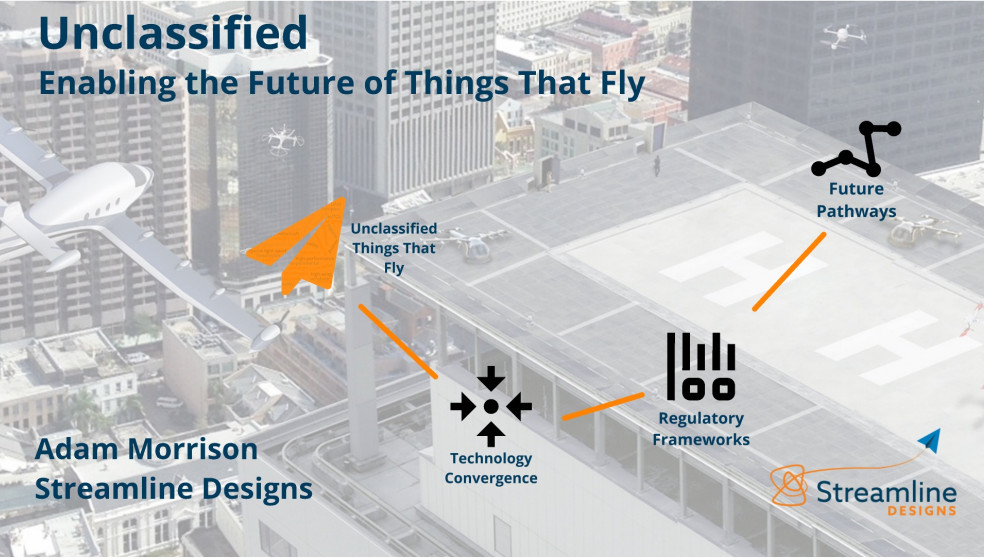
07 Jun 2021 3 secrets to aircraft certification and perfect tacos
Aviation and airworthiness regulation in the US over the past century has been marked by periods of innovation and movement, which are both technology-driven. Starting with the Air Mail and Air Commerce Acts in the 1920’s, these surges of development have been supported by regulatory reactions to support the safety of the surge. The history of aviation regulation in the US has generally orbited around two points: package delivery and defense, and the resultant regulatory environment is a field of silos that contain features and categories such as:
- experimental
- helicopter
- pusher
- high-performance
- acrobatic
- special light-sport
- utility
- etc.
These silos-of-regulation (e.g. Part 23, Part 25, and Part 27) contain some overlap, much nuance, and are difficult to navigate. This in itself has hindered innovation in aviation, as the way to market for a new flying product is fraught with navigational question marks. Now, add to this uncertainty the surge of innovation threads in the recent past:
- electrification
- automation
- non-human see-and-avoid
- position in time and navigation
- distributed propulsion
- industry standards as the basis for certification
- the rise of big data
The confluence of these technologies is spawning vast innovation in aviation.
Arguably more technology-driven innovation has taken place in the past 15 years
than the rest of the combined history of flight.
From multi-flight-mode, multi-rotor urban transport, to commercial space flight, to fully automated package delivery, this recent surge of hybrid and unique configurations has been inadvertently under-supported by the regulatory environment and processes. Limitations on viable commercial operations is currently causing frustration within the burgeoning Unmanned Aircraft Systems (UAS) industry. This is not the fault of the regulatory bodies alone, as the regulatory processes and mechanisms were designed to engage discrete operational categories and discrete aircraft categories…as it has been for 100 years. The problem comes when the edge cases are no longer at the edges. The regulations and regulatory process no longer serve the industry effectively. As we have engaged aircraft and avionics companies as a guide-to-certification and market for the past 15 years, we have been thinking deeply, and working hard to make a better way forward that can safely loosen low-risk commercial operations, as well as accommodate growing operations, and a variety of aircraft configurations, as technology development continues .
Modular, flexible, and robust are the three descriptors of what we view
as an ideal framework for the future of aviation.
Modular, in the way various functional modules can be swapped in and out, based on a set of appropriate requirements;
Flexible, so as to encourage innovation, and unique commercial operations, by applying rigidity and rigor only when it is needed for safety;
Robust, where the framework can withstand what the industry can and will do now and long into the future.
One way of thinking about such a framework is to consider the humble taco bar.

Hopefully you have either been to one of these made-on-the-spot places, or experienced your own personal Fiesta Friday around your dinner table. Under the current regulatory structure, little flexibility is possible. It is like having 2 items on the menu: spicy fish taco, or bean burrito supreme. That’s it. No options, no room for substitutions or alternatives (unless you apply for a waiver or exemption). However, under a more flexible framework, certifying an aircraft would be more like going to a taco bar. First, ascertain your overall hunger level. Then, apply additional filters based on dietary restrictions and preferences. Maybe you are dairy-free; that’s no problem, these are common filters through which the ingredients can be parsed. Gluten-free? You have an infinite number of combinations: chicken-black-bean-corn-tostada, veggie rice bowl with queso, spicy beef nachos with everything on top. Maybe you are vegan, or six -years-old and picky. No problem, there are still plenty of options for a final product to be happily consumed.
Likewise, a modular, flexible, and robust framework for certification would allow for the same kind of approach.
But, in order to go from the two-menu-item system to a taco bar system,
Three major paradigm shifts toward an effective framework for the future are needed.
- Continuum of certification
- Innovation cycle timing
- Enabling strategy for commercial UAS
The enfolding of these three shifts moves us from the mismatch between what the industry wants to do, and what the regulations say, to flexible safety and performance-based certification. Let’s learn about each of these shifts one by one:
Continuum vs. Classification
You can think of today’s regulatory environment as a set of discrete points: category 1, category 2, mission 1, mission 2. However, as regulations move from addressing classification silos to only safety intent, we can eliminate the discrete nature of both aircraft category and specific mission. Instead, function, or system-specific, industry standards are authored to a continuum of airworthiness requirements that can more broadly apply to any type of aircraft that someone may want to bring to market. This includes configurations no one has yet imagined.
Today, we have very specific requirements for very specific types, or classes, of aircraft. If we can get to a point where the regulations are talking about safety intent, then we can disconnect those classification silos. In this way, we free ourselves from the constraints of configuration-specific ways to certification (a la fish taco with no substitutions). In the future, we will not be asking questions like “does it have wings?” in order to get the aircraft certified. Instead, we will look at the functions of the aircraft (quantities of specific ingredients), and not specified solutions (bean burrito supreme, no substitutions).
Any one of us would be hard-pressed to put our futurist hat on and say, “this is what it’s going to look like” when it comes to things that fly. We need a system that can accommodate a lot of flexibility looking forward, while staying focused on safety.
Strategically Synchronized Rule-Making and Innovation Cycles
Today’s rule-making processes take a very long time, when compared to industry innovation cycles and standards development cycles. This mismatch also causes rub, as companies developing new products cannot predict when the airspace or regulations will accommodate their entry to market. The situation creates hesitancy to bring forth new innovation, or stalls existing innovation to gather dust, as regulations and notices of availability catch up and occasionally are rapidly obsoleted.
In a proactively-synced system, 5 one-year, standards-development cycles could work within a single, five-year, rule-making focus. The five-year regulatory cycle would focus on defining the underlying safety intent for a future, 5 year period. The following 5 one-year standards cycles the focus on innovation and implementation of that safety intent. The standards-makers would then be able to time their efforts in alignment with predictable, coming rule changes. A synchronized innovation and rule-making (safety intent) cycle would enable both the regulators and industry to work together more cohesively, as well as make strategic projections that protect public safety while positively impacting the market.
An Enabling Strategy for Commercial UAS Operations
Demand for beyond visual line-of-sight (BVLOS) operations of UAS is increasing, yet there is still no clear picture for how to approve and assure safe autonomous operations in the national airspace for a huge range of potential UAS missions. So far, solutions have generally been tactical in nature, and aimed at very specific use-cases (a specific N-numbered aircraft flown with a specific mission in a specific location). This is a bit like allowing a single taco containing exotic and questionable ingredients to be eaten in the waiting area of the local emergency room.
With an appropriate shift to a flexible framework as described above, the industry won’t be using terms like BVLOS or CONOPs or OOP five years from now. The specific dishes created from the ingredients (functions) don’t have to fall into predetermined categories. Instead, safety-driven standards aimed at measures of performance can be employed.
If you eat like I do, you might want a moderately sized 50 gram bed of greens, topped with 150 grams of shredded, smoked pork, a big glob of guacamole, and lots of spicy and pickled toppings. The dish doesn’t have a name, but it fulfills my personal need for macronutrients and preferred flavor combination. In fact, I don’t have to identify as a “whole foods eater,” or “omnivore,” I can make my plate and enjoy it. In the same way, aircraft (and especially up-and-coming UAS and UAM/AAM solutions) will not need categorical definition under this flexible framework.
As long as the safety requirements for the functions and mission of the aircraft are satisfied by the safety-driven basis for certification in consensus standards,
everyone is happy.
A group sponsored by ASTM International F38 on UAS has spent the last 18 months developing this robust and strategic, menu-based approach, rooted in industry consensus standards, to enable routine BVLOS in national airspace systems worldwide. The group has produced a detailed technical report that describes the ingredients in the framework. It is usable for any UAS operation, and could be embraced by regulatory bodies around the world. This framework is based on aircraft functions, rather than specific solution systems. It focuses on performance measures aimed at safety intent, and not on categorical performance requirements.
Whether you are new to the light aviation world, or a seasoned veteran, this is an exciting time for the aviation industry. As we move from constricting regulatory silos to a smooth continuum of certification, the innovation possibilities will no longer be thwarted by rigid regulatory structure.
We’re sure you have questions about, and/or comments on this topic. Post a comment below or contact us to talk through them. And for more information on using or getting involved with this fresh approach for your product or mission in mind, connect with us today.

Larry Van Dyke
Posted at 23:51h, 17 JuneI agree it’s time to break down the silos. It doesn’t make any difference whether it is certification or anything else, we have built so many silos over the years and each silo is like it’s own little fiefdom. About 4 years ago I proposed a somewhat similar approach to certification that at least one person high up in the FAA liked but most of the other responses I got was “we’ve never done it that way and it just won’t work” to which I have to agree it won’t work because people are stuck in their silos and afraid of trying a different approach. I also did some work on comparing the different rules for part 23, 25, 27, and 29 and found several that are essentially identical prescriptive requirements for meeting some safety objective. But those rules are only one way of producing a safe product. Part 23 amendment 64 is trying to take a different approach but I still see a lot of people ignoring the intent of amendment 64 and falling back on to relying only on the prior amendments as the only way to meet the safety objectives. In the Safety Continuum meeting today they started to put their toes in the water with regard to new ways to meet the safety intent of the rules and there are multiple ways that one might do that, not just what was done in the past. And this can be expanded to different types of aircraft that what we are currently familiar with.